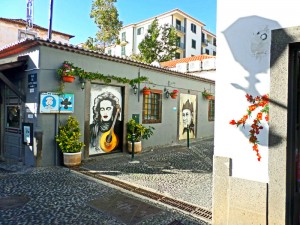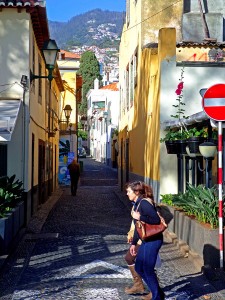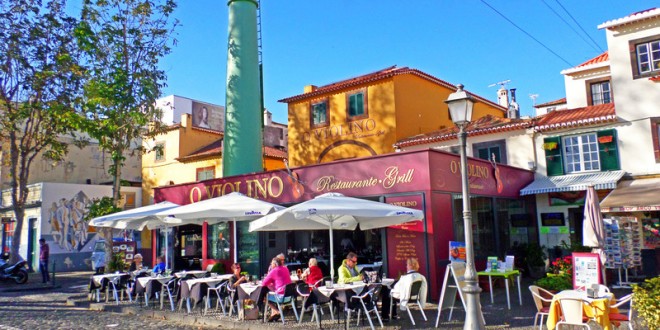Case 2
Funchal’s Old Town
 28 years ago work began on restoring part of the 500 years of history of the first residential settlement in Funchal, a city symbolic of Portugal’s Era of Exploration. Throughout the previous decades, the city had expanded westwards, leaving behind to continued degradation part of its history: the Santa Maria neighbourhood. Or as it is otherwise known, the ‘Old Town’.
28 years ago work began on restoring part of the 500 years of history of the first residential settlement in Funchal, a city symbolic of Portugal’s Era of Exploration. Throughout the previous decades, the city had expanded westwards, leaving behind to continued degradation part of its history: the Santa Maria neighbourhood. Or as it is otherwise known, the ‘Old Town’.
Six years on from the discovery of Madeira (1419), the first settlements were established in the east of the bay thereby founding Funchal. The Santa Maria neighbourhood was chosen as the site for building the Church of Santa Maria do Calhau. Around a century later (1508), Funchal was endowed with a city charter. There was expansion ongoing throughout centuries spanning the geography between the coastline and the uplands. However, in the city centre that still today retains the most movement, especially by day but increasingly by night.
Throughout decades, the ‘Old Town’ steadily became evermore rundown as happens with many inhabitations rich in architectonic history but poor in everything else. Buildings slowly beginning to crumble, an elderly population, a rootless youth, insecurity at a maximum and with an uncertain future.
This was the context when, in 1986, decree legislation was passed that classified the ‘Old Town’ of Funchal as an architectonic site of regional value. “In this zone, remains of a Manueline origin coexist alongside evidence of the prosperity arising out of the sugar trade, 17th and 18th century constructions bearing expressive characteristics, both due to the restrictions imposed by the winery industry or the enrichment resulting; buildings from the last century and this one”, highlights one passage from the document.
Bruno Pereira, the former council vice-president and current councillor, emphasises the many phases that the restoration project has been through. “In 1980, we were awarded the Pomme D’Or (1) award. However, in truth, the ‘Old Town’ was going through a more difficult process and it was not until in this century that there was renewed investment with the Council making recourse to sources of financing and endowing the area with infrastructures, a new water network, basic sanitation, electricity and cable television provision as well as the new pavements in traditional Madeiran cobbles”.
 The work done since has been perceived as a success by many but also has its own critics. Around 70% of the rundown properties were restored, roads closed to traffic and opened to pedestrians, “buildings transformed into centres of leisure, restaurants, trade and culture and an open-air car park became a garden with the sea right in front”, recalled the councillor. “Beyond the stores and the restaurants that bring life to this zone, various infrastructures underwent restoration and many artistic initiatives launched”. The ‘Doors with Art’ reflects the most visible initiative as this contributed to even rundown buildings taking on another aspect (even if only the ‘façade’) along various streets.
The work done since has been perceived as a success by many but also has its own critics. Around 70% of the rundown properties were restored, roads closed to traffic and opened to pedestrians, “buildings transformed into centres of leisure, restaurants, trade and culture and an open-air car park became a garden with the sea right in front”, recalled the councillor. “Beyond the stores and the restaurants that bring life to this zone, various infrastructures underwent restoration and many artistic initiatives launched”. The ‘Doors with Art’ reflects the most visible initiative as this contributed to even rundown buildings taking on another aspect (even if only the ‘façade’) along various streets.
There is a great deal of work still to be done. However, to a certain extent, what was done did transform one practically dead part of the city into one of its most attractive tourism areas, safer for both residents and visitors, by day and by night, and above all, living. A new ‘Old Town’ is born here with each day, month and year that passes.
www.cm-funchal.pt/index.php?option=com_content&view=article&id=812&Itemid=398
www.cm-funchal.pt/index.php?option=com_content&view=article&id=167:enquadramento-historico-santa-maria&catid=63&Itemid=114
www.dre.pt/cgi/dr1s.exe?t=dr&cap=1-1200&doc=19862760%20&v02=&v01=2&v03=1900-01-01&v04=3000-12-21&v05=&v06=&v07=&v08=&v09=&v10=&v11=Decreto-Lei&v12=270/92&v13=&v14=&v15=&sort=0&submit=Pesquisar
www.cm-funchal.pt/index.php?option=com_content&view=article&id=168:accoes-desenvolvidas-em-prol-da-recuperacao-da-zona&catid=63&Itemid=114
 Eco123 Revista da Economia e Ecologia
Eco123 Revista da Economia e Ecologia



